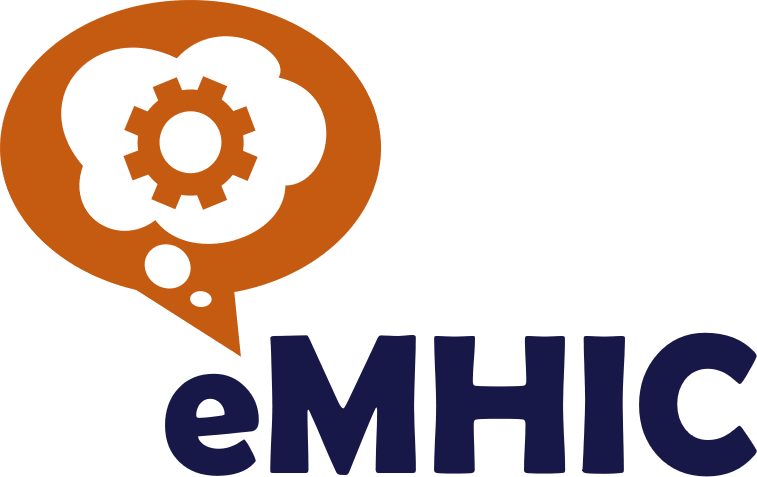This paper makes a case for digital mental health and provides insights into how digital technologies can enhance (but not replace) existing mental health services. We describe digital mental health by presenting a suite of digital technologies (from digital interventions to the application of artificial intelligence). We discuss the benefits of digital mental health, for example, a digital intervention can be an accessible stepping-stone to receiving support. The paper does, however, present less-discussed benefits with new concepts such as ‘poly-digital’, where many different apps/features (e.g. a sleep app, mood logging app and a mindfulness app, etc.) can each address different factors of wellbeing, perhaps resulting in an aggregation of marginal gains.
Key takeaways
- “Digital technologies can be used to augment existing mental health services without replacing them, and act as a kind of ‘digital glue’ to improve the user experience and future proof services for future generations.”
- “Digital technologies can be used to facilitate the collection of high quality data and repeated measures (both digital phenotyping and EMA) from clients outside of therapy in order to better inform the service provider and to improve the quality of the time spent with the client face to face.”
- “Digital mental health interventions can increase the accessibility of support (24/7) and can also be used as a ‘non-stigmatising’ and ‘anonymous’ stepping stone to receiving support.”
- “A digital mental health platform could provide a personalised set of apps or features (creating a tailored poly-digital ecosystem) to an individual which could collectively result in an aggregation of marginal gains.”
- “…consult all stakeholders in the design of digital mental health technologies, for example, we should consider the client needs, the reliability of the technology and the endorsements of the healthcare professionals.”
- “…consider all ethical aspects of deploying different kinds of digital technologies in mental health.”
References
- Pierce, M. et al. Mental health before and during the COVID-19 pandemic: a longitudinal probability sample survey of the UK population. Lancet Psychiatry 7, 883–892 (2020).
- CDC. About mental health. Centers for Disease Control and Prevention. https://www.cdc.gov/mentalhealth/learn/index.htm (2021).
- Henderson, C., Evans-Lacko, S. & Thornicroft, G. Mental illness stigma, help seeking, and public health programs. Am. J. Public Health 103, 777–780 (2013).
- Cooper C. Thousands attempt suicide while on NHS waiting list for psychological help. https://www.independent.co.uk/life-style/health-and-families/health-news/thousands-attempt-suicide-while-on-nhs-waiting-list-for-psychological-help-9734284.html (2014).
- Morozov, E. To Save Everything, Click Here: The Folly of Technological Solutionism (Public Affairs, 2014).
- Mulvenna, M. D. et al. Ethical issues in democratizing digital phenotypes and machine learning in the next generation of digital health technologies. Philos. Technol. 34, 1945–1960 (2021).
- Freitas, J. R. S. et al. Virtual reality exposure treatment in phobias: a systematic review. Psychiatr. Q. 92, 1685–1710 (2021).
- Bollmer, G. Empathy machines. Media Int. Aust. 165, 63–76 (2017).
- Quigley, F., Moorhead, A., Bond, R., Zheng, H. & McAloon, T. A virtual reality training tool to improve weight-related communication across healthcare settings. In Proceedings of the 31st European Conference on Cognitive Ergonomics 19–22 (2019).
- Fitzpatrick, K. K., Darcy, A. & Vierhile, M. Delivering cognitive behavior therapy to young adults with symptoms of depression and anxiety using a fully automated conversational agent (Woebot): a randomized controlled trial. JMIR Ment. Health 4, e7785 (2017).
- Salmi, S., Mérelle, S., Gilissen, R. & Brinkman, W. P. Content-based recommender support system for counselors in a suicide prevention chat helpline: design and evaluation study. J. Med. Internet Res. 23, e21690 (2021).
- Benítez-Guijarro, A. et al. Co-creating Requirements and Assessing End-User Acceptability of a Voice-Based Chatbot to Support Mental Health: A Thematic Analysis of a Living Lab Workshop. In: D’Haro, L. F., Callejas, Z., Nakamura, S. (eds) Conversational Dialogue Systems for the Next Decade. Lecture Notes in Electrical Engineering, vol 704. Springer, Singapore. https://doi.org/10.1007/978-981-15-8395-7_15 (2021).
- O’Neill, S. et al. Data analytics of call log data to identify caller behaviour patterns from a mental health and well-being helpline. Health Informatics J. 25, 1722–1738 (2019).
- Insel, T. R. Digital phenotyping: a global tool for psychiatry. World Psychiatry 17, 276 (2018).
- Chekroud, A. M. et al. The promise of machine learning in predicting treatment outcomes in psychiatry. World Psychiatry 20, 154–170 (2021).
- Grigorash, A. et al. Predicting caller type from a mental health and well-being helpline: analysis of call log data. JMIR Ment. Health 5, e9946 (2018).
- Potts, C. et al. Chatbots to support mental wellbeing of people living in rural areas: can user groups contribute to co-design? J. Technol. Behav. Sci. 6, 652–665 (2021).
- Lehtimaki, S., Martic, J., Wahl, B., Foster, K. T. & Schwalbe, N. Evidence on digital mental health interventions for adolescents and young people: systematic overview. JMIR Ment. Health 8, e25847 (2021).
- BBC. Generation mute… no talking aloud. https://www.bbc.co.uk/ideas/videos/generation-mute-no-talking-aloud/p05ydw78 (2018).
- Clear, J. Atomic Habits: An Easy & Proven Way to Build Good Habits & Break Bad Ones (Penguin, 2018).
- Balaskas, A., Schueller, S. M., Cox, A. L. & Doherty, G. Understanding users’ perspectives on mobile apps for anxiety management. Front. Digit. Health 4, 178 (2022).
- Potts, C. et al. Ecological momentary assessment within a digital health intervention for reminiscence in persons with dementia and caregivers: user engagement study. JMIR mHealth uHealth 8, e17120 (2020).
- ORCHA. Digital & mental health recovery action plans. https://orchahealth.com/wp-content/uploads/2021/04/Mental_Health_Report_2021_final.pdf (2021).
- Camacho, E., Cohen, A. & Torous, J. Assessment of mental health services available through smartphone apps. JAMA Netw. Open 5, e2248784 (2022).
- Koh, J., Tng, G. Y. & Hartanto, A. Potential and pitfalls of mobile mental health apps in traditional treatment: an umbrella review. J. Pers. Med. 12, 1376 (2022).
- Baumel, A., Muench, F., Edan, S. & Kane, J. M. Objective user engagement with mental health apps: systematic search and panel-based usage analysis. J. Med. Internet Res. 21, e14567 (2019).
- Torous, J., Nicholas, J., Larsen, M. E., Firth, J. & Christensen, H. Clinical review of user engagement with mental health smartphone apps: evidence, theory and improvements. Evid. Based Ment. Health 21, 116–119 (2018).
- Greenhalgh, T. et al. Beyond adoption: a new framework for theorizing and evaluating nonadoption, abandonment, and challenges to the scale-up, spread, and sustainability of health and care technologies. J. Med. Internet Res. 19, e8775 (2017).
- Wisniewski, H., Gorrindo, T., Rauseo-Ricupero, N., Hilty, D. & Torous, J. The role of digital navigators in promoting clinical care and technology integration into practice. Digit. Biomark. 4, 119–135 (2020).
- Henderson, B. et al. Designing social prescription services to support people with long-term conditions. In ENoLL Open Living Lab Days 2014 Conference Proceedings 158–170 (European Network of Living Labs, 2014).
- Orben, A. & Przybylski, A. K. Screens, teens, and psychological well-being: evidence from three time-use-diary studies. Psychol. Sci. 30, 682–696 (2019).
- Torous, J. et al. The growing field of digital psychiatry: current evidence and the future of apps, social media, chatbots, and virtual reality. World Psychiatry 20, 318–335 (2021).
- Reeves, B. & Nass, C. The Media Equation: How People Treat Computers, Television, and New Media Like Real People. Center for the Study of Language and Inf. 10, 236605 (1996).
- Bickmore, T. W. et al. Patient and consumer safety risks when using conversational assistants for medical information: an observational study of Siri, Alexa, and Google Assistant. J. Med. Internet Res. 20, e11510 (2018).
- Parmar, P., Ryu, J., Pandya, S., Sedoc, J. & Agarwal, S. Health-focused conversational agents in person-centered care: a review of apps. NPJ Digital Med. 5, 1–9 (2022).
- Agrawal, K. To study the phenomenon of the Moravec’s Paradox. Preprint at https://arxiv.org/abs/1012.3148 (2010).
- Inkster, B., Sarda, S. & Subramanian, V. An empathy-driven, conversational artificial intelligence agent (Wysa) for digital mental well-being: real-world data evaluation mixed-methods study. JMIR mHealth uHealth 6, e12106 (2018).
- Baldry, S. AI and IAPT, the pathway forward. https://blogs.wysa.io/blog/events/how-to-successfully-embed-ai-into-your-iapt-service-webinar (2022).
- Fiske, A., Henningsen, P. & Buyx, A. Your robot therapist will see you now: ethical implications of embodied artificial intelligence in psychiatry, psychology, and psychotherapy. J. Med. Internet Res. 21, e13216 (2019).
- Thimbleby, H., Lewis, A. & Williams, J. Making healthcare safer by understanding, designing and buying better IT. Clin. Med. 15, 258 (2015).
- Walsh, C. On building a faster horse: design thinking for disruption. https://www.forbes.com/sites/forbesfinancecouncil/2017/10/19/on-building-a-faster-horse-design-thinking-for-disruption/?sh=174cf34349f9 (2017).
- Rubin J. Handbook of Usability, How to Plan, Design and Conduct Effective Tests (John Wiley & Sons, 1994).
- ISO-13407 1999 Human-centred design processes for interactive systems. 1999.
- Von Hippel, E. Lead user: a source of novel product concepts. Manag. Sci. 32, 791–805 (1986).
- Urban, G. & von Hippel, E. Lead user analyses for the development of new industrial products. Manag. Sci. 34, 569–582 (1988).
- Mitchell, W. J. Me++ : The Cyborg Self and the Networked City (MIT Press, 2003).
- Feuerstein, K., Hesmer, A., Hribernik, K. A., Thoben, K.-D. & Schumacher, J. Living labs: a new development opportunity. In European Living Labs—A New Approach for Human Centric Regional Innovation (eds Schumacher, J. & Niitamo, V.-P.). Wissenschaftlicher Verlag (2008).
- Mangyoku, M. et al. IDeALL: Investigating design-for-all and living-lab methods for engaging users in value co-creation. In 2014 International Conference on Engineering, Technology and Innovation (ICE). pp. 1–8. IEEE. https://doi.org/10.1109/ICE.2014.6871564 (2014).
- Nielsen, J. Usability Engineering (Morgan Kaufmann, 1994).
- Nielsen, J. 10 Usability Heuristics for User Interface Design (Nielsen Norman Group, 1994).
- Kahneman, D. Thinking, Fast and Slow (Farrar, Straus and Giroux, 2011).
- Vial, S., Boudhraâ, S. & Dumont, M. Human-centered design approaches in digital mental health interventions: exploratory mapping review. JMIR Ment. Health 9, e35591 (2022).
- Martin, Y. EDS 2019—Yolanda Martin (Farfetch)—why user centred design is going to get us killed. https://www.youtube.com/watch?v=0CV3Q28ZC8o (2020).
- Sweeney, C. et al. Can Chatbots help support a person’s mental health? Perceptions and views from mental healthcare professionals and experts. ACM Trans. Comput. Healthc. 2, 1–15 (2021).
- Engel, F. et al. Sensecare: towards an experimental platform for home-based, visualisation of emotional states of people with dementia. In Advanced Visual Interfaces. Supporting Big Data Applications: AVI 2016 Workshop, AVI-BDA 2016, Bari, Italy, June 7–10, 2016, Revised Selected Papers, 63–74 (Springer International Publishing, 2016).
- EIT Health. Transforming healthcare with AI-The impact on the workforce and organisations. https://eithealth.eu/wp-content/uploads/2020/03/EIT-Health-and-McKinsey_Transforming-Healthcare-with-AI.pdf (2020).





